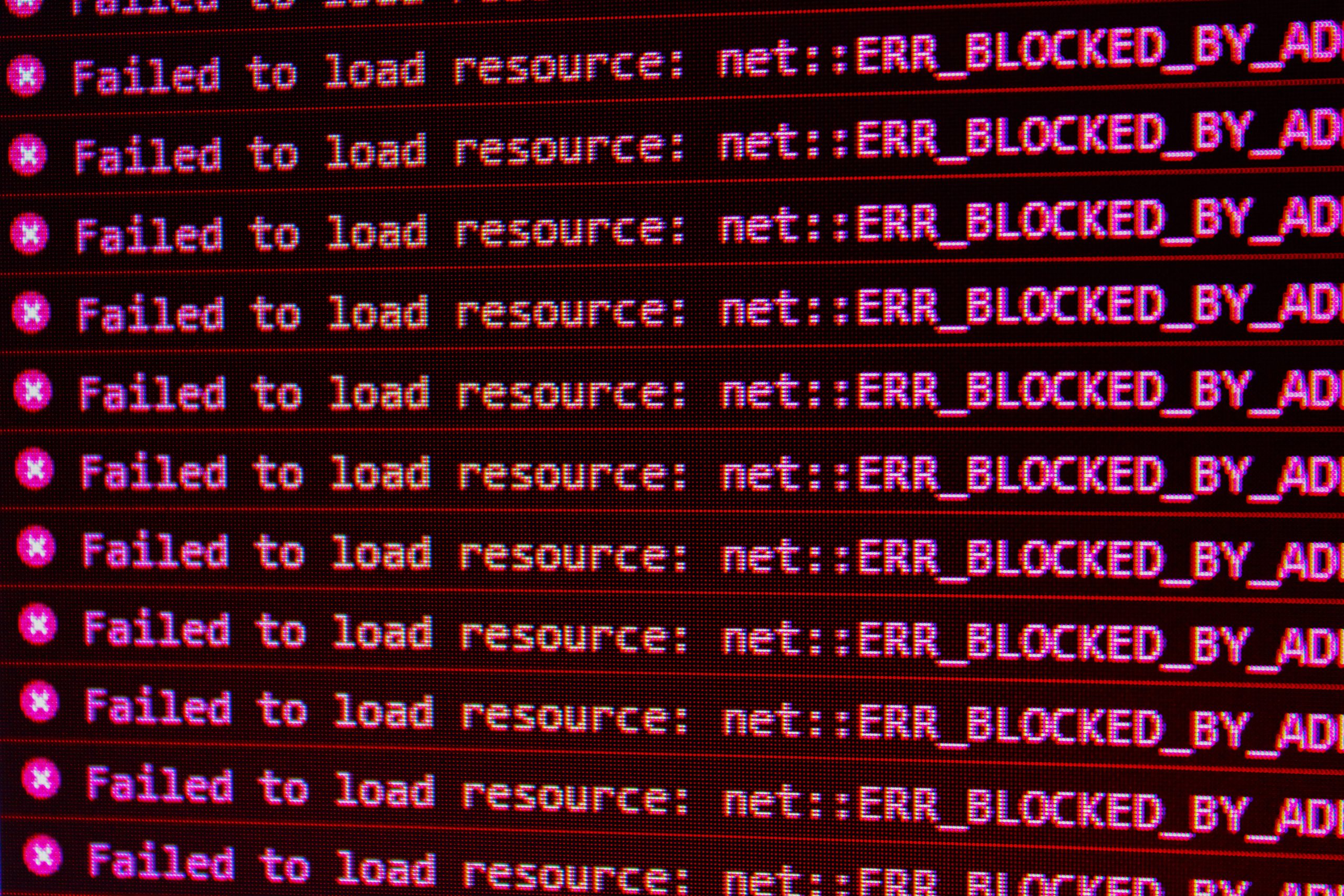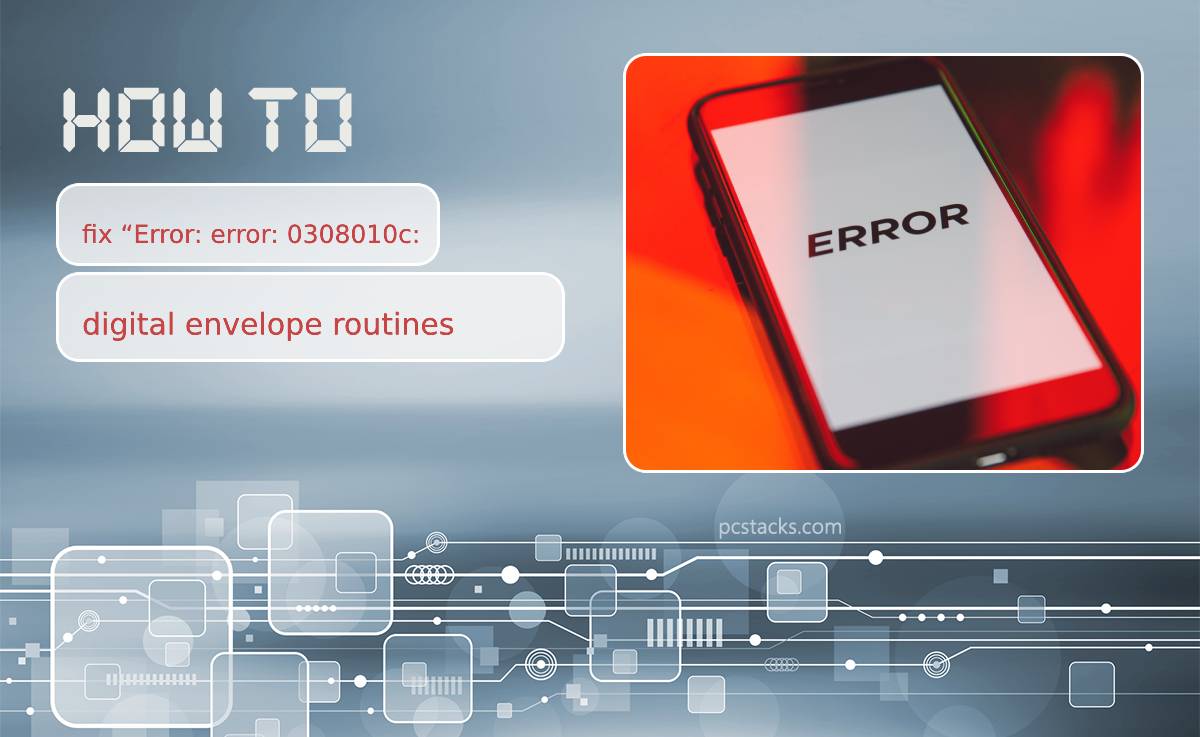Digital encryption is a vital component of modern-day communication and data security, but when errors like error:0308010c:digital envelope routines rear their ugly head, it can throw a wrench into even the most carefully laid-out plans. Whether you’re a seasoned cybersecurity professional or a beginner navigating the complex world of encryption algorithms, understanding how to troubleshoot and fix this error is crucial. So join us as we unravel the mystery behind this enigmatic error code and equip ourselves with the knowledge needed to conquer it once and for all.
Table of Contents
Introduction: Understanding the Error Code
Understanding the Error Code is an essential first step in resolving any technical issue. When encountering the error code error:0308010c:digital envelope routines, it’s crucial to decipher its meaning and significance. This error code often indicates a problem with digital envelope routines, which are cryptographic procedures used to secure data transmission. By understanding the specific digital envelope routines affected by this error, users can begin to comprehend the root cause of the issue and formulate an effective plan for resolution.
Furthermore, delving into the intricacies of digital envelope routines provides insight into the underlying encryption processes that safeguard sensitive information. Understanding how these routines operate sheds light on potential vulnerabilities and implementation errors that may lead to the manifestation of error codes. By gaining a deeper appreciation for these digital security mechanisms, users can adopt proactive measures to prevent similar errors from occurring in the future and ensure robust data protection practices.

Causes of the Error: Common Triggers and Issues
In the world of digital encryption, the error code error:0308010c can be triggered by a variety of factors. One common trigger is an outdated or incompatible cryptographic library within the system. This issue often arises when attempting to establish secure connections with servers that have updated to more advanced cryptographic protocols.
Another potential cause of this error is misconfigured system settings, such as incorrect date and time settings or inconsistencies in certificate chain verification. These issues can lead to authentication failures and subsequently trigger the error code error:0308010c.
Furthermore, conflicts between different software components or improper installation of cryptographic libraries can also contribute to the occurrence of this error. It’s crucial for users encountering this issue to thoroughly investigate these potential triggers and address them effectively in order to resolve the error:0308010c:digital envelope routines issue.
Troubleshooting Steps: Resolving the Digital Envelope Error
When encountering the digital envelope error (error:0308010c), it can be frustrating and puzzling to understand its cause and resolution. One effective troubleshooting step is to first ensure that your system’s date and time settings are accurate. Sometimes, mismatched clock settings can lead to errors in digital certificate validation, causing the digital envelope error to manifest.
Another crucial step involves checking for any pending updates for your operating system and software applications. Outdated versions of cryptographic libraries or security protocols may contribute to the occurrence of this error. It’s essential to regularly update these components to ensure compatibility with the latest security standards.
Furthermore, considering issues related to firewalls or network configurations is important in resolving the digital envelope error. Firewalls might be blocking necessary connections for secure data transmission, leading to errors in digital envelope routines. By reviewing and adjusting firewall settings as needed, you can mitigate impediments that could trigger this particular error message.
Understanding these troubleshooting steps equips individuals with practical strategies for addressing the digital envelope error effectively, providing a solid foundation for fixing this issue and maintaining a secure, reliable computing environment.

Updating Security Software: Ensuring Compatibility and Functionality
Updating security software is crucial in today’s constantly evolving digital landscape, but ensuring compatibility and functionality can be a complex task. With new updates being released frequently, it’s essential to stay vigilant and ensure that the security software you use remains compatible with your system. This involves checking for potential conflicts with other programs or devices, as well as verifying that the updated software will seamlessly integrate with your existing infrastructure.
Moreover, ensuring the functionality of updated security software is equally important. It’s not just about having the latest version installed; it’s about making sure that all its features are fully operational and providing the intended protection. This requires thorough testing of the updated software across different scenarios to identify any potential issues or weaknesses. By taking these steps, users can proactively mitigate any errors or vulnerabilities while maintaining a robust security posture in an ever-changing cyber environment.
Checking Certificates and Keys: Verifying Validity and Integrity
In the realm of digital security, checking certificates and keys holds paramount importance in ensuring the validity and integrity of encrypted communication. Certificate verification involves scrutinizing the digital signature of a certificate to confirm its authenticity, while key verification entails validating the public key’s match with its associated private key. To ensure secure communication, both steps are crucial for safeguarding against potential man-in-the-middle attacks and data breaches.
By verifying certificates and keys, organizations can mitigate the risk of unauthorized access to sensitive information and protect against malicious activities. It’s imperative to implement rigorous checks using trusted certificate authorities and robust encryption algorithms to fortify the security posture. Furthermore, regular monitoring and validation of certificates and keys help in identifying potential vulnerabilities or irregularities that may compromise the confidentiality and integrity of transmitted data. Embracing a proactive approach to verifying certificates and keys enables businesses to uphold the trustworthiness of their digital infrastructure while fostering a secure environment for online transactions and communications.

Utilizing Alternative Encryption Methods: Exploring Workarounds
In the ever-evolving landscape of digital security, exploring alternative encryption methods has become increasingly crucial. When faced with errors such as error:0308010c:digital envelope routines, it’s important to consider workarounds that go beyond traditional encryption techniques. One intriguing approach is the utilization of steganography, which involves concealing messages within other non-secret data to evade detection. By embedding encrypted information within seemingly innocent files like images or audio tracks, steganography offers a compelling workaround for bypassing standard digital envelope routines.
Another avenue worth exploring is the application of quantum key distribution (QKD) as an alternative to conventional cryptographic algorithms. QKD leverages the principles of quantum mechanics to create secure communication channels, making it highly resistant to various forms of cyber-attacks. Embracing these innovative solutions not only presents new possibilities for overcoming digital security obstacles but also underscores the importance of continuously adapting and enhancing our encryption methods in an ever-changing threat landscape.
Conclusion: Resolving error:0308010c:digital envelope routines
In conclusion, resolving the error 0308010c:digital envelope routines requires a methodical approach and an understanding of the underlying issues. One effective solution involves updating or reinstalling the cryptographic libraries on your system to ensure compatibility and security. Another approach is to check for any conflicting applications or software that may be interfering with the digital envelope routines, addressing any potential conflicts or dependencies.
It’s also important to consider the specific circumstances surrounding the error occurrence, as it could be related to a particular operation or transaction. By isolating and analyzing these scenarios, you can gain valuable insights into the root cause of the issue and tailor your resolution efforts accordingly. Ultimately, tackling this error demands patience, technical know-how, and a proactive mindset in troubleshooting and identifying potential resolutions tailored to your unique environment.




